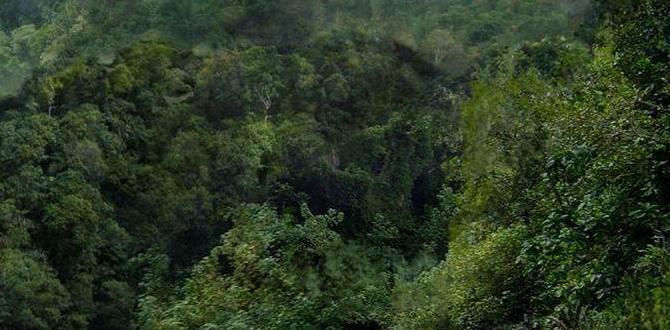Addis Ababa shoulder season trips are surprisingly simple with the right plan. This guide reveals essential tips for a comfortable, affordable, and memorable experience in Ethiopia’s vibrant capital during its less crowded periods.
Planning a trip to Addis Ababa can feel overwhelming, especially when you’re unsure of the best time to visit. Many travelers worry about unpredictable weather or missing out on key experiences. But what if you could visit during a sweet spot, avoiding both the peak tourist crowds and the harshest weather?
Traveling during the shoulder season in Addis Ababa is precisely that sweet spot. It offers a more authentic and relaxed experience, often at a better value. This guide will walk you through everything you need to know to make your Addis Ababa shoulder season trip an absolute essential for your travel calendar. We’ll cover what to pack, when to go, and how to make the most of this incredible city, ensuring your journey is smooth and enjoyable.
What is the Addis Ababa Shoulder Season?
The shoulder season generally refers to the periods just before and after the peak tourist season. For Addis Ababa, this typically means the months of September to November and March to May. These periods strike a fantastic balance, offering pleasant weather conditions without the intense crowds and higher prices often associated with the prime dry season.
During these months, you’ll find that major attractions are less congested, making it easier to immerse yourself in the local culture and enjoy a more personal experience. The weather is usually a welcome reprieve; while the main rainy season (June to August) has passed or is yet to begin, and the major dry season (December to February) hasn’t fully set in, you can expect a mix of sunshine and occasional, usually short-lived, rain showers. This makes it perfect for exploring the city’s historical sites, bustling markets, and vibrant art scene.
Why Choose Addis Ababa for a Shoulder Season Trip?
Opting for a shoulder season trip to Addis Ababa offers several compelling advantages that make it a “proven essential” for savvy travelers.
- Fewer Crowds: Experience popular landmarks like the National Museum of Ethiopia and Holy Trinity Cathedral with more breathing room. This allows for a more relaxed and intimate exploration of the city’s rich history and culture.
- Cost Savings: Flights and accommodation can often be more affordable during these off-peak periods. This means your travel budget can stretch further, allowing for more experiences or a longer stay.
- Pleasant Weather: While not as consistently dry as the peak season, the shoulder months generally offer a comfortable climate. You’ll experience fewer extreme temperatures and can still expect plenty of sunshine, often interspersed with brief, refreshing showers that clear the air and bring out lush greenery.
- Authentic Interactions: With fewer tourists, locals are often more accessible for genuine interactions. This provides a richer cultural exchange and a deeper understanding of everyday Ethiopian life.
- Lush Landscapes: The occasional rains during the shoulder season often leave Addis Ababa and its surroundings looking beautifully green and vibrant, especially in the months following the main rainy season.
Understanding the Shoulder Season Months
Let’s break down the specific shoulder season periods to help you pinpoint the ideal time for your visit:
September to November: Post-Rainy Season Bloom
Following the main rainy season (June-August), the months of September, October, and November are particularly beautiful in Addis Ababa. The landscape is verdant, and the air is fresh. While there’s still a chance of lingering rain, especially in early September, by October and November, you’ll find mostly sunny days with cooler evenings. This is an excellent time for photography enthusiasts to capture the city and its surroundings in their natural splendor.
March to May: Pre-Rainy Season Warmth
These months mark the transition from the dry season to the rainy season. March and April are typically warm and sunny, making them ideal for outdoor activities. May can see an increase in rainfall, but often these are scattered showers that don’t significantly disrupt travel plans. The temperatures are generally pleasant, making it comfortable for exploring the city’s attractions.
Structuring Your Addis Ababa Shoulder Season Trip Plan
A well-structured plan is key to maximizing your shoulder season adventure. Here’s a step-by-step approach to ensure a smooth and enjoyable trip.
Step 1: Book Your Flights and Accommodation Early
Even though it’s the shoulder season, booking in advance is always a wise strategy. This often secures better prices and a wider selection of flights and hotels. Look for deals as airlines and hotels anticipate lower demand. Consider hotels in areas like Kazanchis or Bole for a good balance of accessibility and amenities.
Step 2: Create a Flexible Itinerary
A shoulder season trip thrives on flexibility. While it’s good to have a list of must-see sights, be prepared to adjust your plans if the weather doesn’t cooperate. For instance, if you encounter rain, you can swap an outdoor market visit for a museum tour. This adaptability will prevent disappointment and allow you to embrace unexpected opportunities.
Step 3: Pack Smart for Variable Weather
Packing is crucial for shoulder season travel. You need to be prepared for both sunshine and potential rain, as well as temperature fluctuations. Layering is your best friend.
Essential Packing List for Addis Ababa Shoulder Season
- Lightweight, Waterproof Jacket: Essential for unexpected rain showers. A breathable option is ideal.
- Comfortable Walking Shoes: You’ll be doing a lot of exploring. Ensure they are broken in.
- Layers of Clothing: Include t-shirts, long-sleeved shirts, a sweater or fleece, and a light jacket. Temperatures can vary throughout the day.
- Scarf or Shawl: Useful for visiting religious sites (modest dress is required) and for warmth on cooler evenings.
- Sun Protection: Hat, sunglasses, and sunscreen are important, even on cloudy days.
- Insect Repellent: Particularly if you plan to spend time in green areas or venture outside the city.
- Adapter and Power Bank: For charging your devices.
- Personal Essentials: Including any necessary medications and personal care items. For travelers who may need them, packing discreet adult diapers or child diapers can ensure comfort and confidence throughout your journey, especially during long days of sightseeing or travel. Brands offering reliable absorbency and protection are key for stress-free exploration.
Step 4: Stay Informed About Local Conditions
Keep an eye on the weather forecast for Addis Ababa. Local news or weather apps can provide up-to-date information, helping you make informed decisions about your daily activities. Familiarize yourself with local transportation options and general safety advice from reputable sources like your country’s foreign travel advice website. For example, the U.S. Department of State provides country-specific information for Ethiopia, which is always a good resource before and during your trip.
Step 5: Embrace the Local Culture
Shoulder season is perfect for diving deep into Ethiopian culture. Visit local coffee ceremonies—a cornerstone of Ethiopian social life—explore the Mercato, one of Africa’s largest open-air markets, and try the diverse cuisine. Be open to conversations, learn a few Amharic phrases (like “Selam” for hello and “Ameseginalehu” for thank you), and be respectful of local customs. The slower pace of the shoulder season allows for these richer, more meaningful experiences.
Top Addis Ababa Shoulder Season Activities
The pleasant conditions of the shoulder season make it ideal for enjoying a wide range of activities in and around Addis Ababa.
Historical and Cultural Sites
- National Museum of Ethiopia: Home to “Lucy,” the fossilized hominid skeleton, and a rich collection of Ethiopian art and artifacts.
- Holy Trinity Cathedral: An important Ethiopian Orthodox Christian cathedral with stunning architecture and historical significance.
- Menelik II Palace: Explore the former imperial palace, now a museum, offering insights into Ethiopia’s royal past.
- Ethnological Museum: Located within the former palace of Emperor Haile Selassie, it provides a comprehensive look at Ethiopian cultures and traditions.
- Addis Ababa Museum (formerly “Jubilee Palace”): Showcases historical artifacts and displays relating to Ethiopia’s modern history.
Markets and Shopping
The Mercato is a must-visit, but be prepared for its vastness. You can find everything from spices and textiles to local crafts and recycled goods. For more curated crafts and souvenirs, consider visiting the shops around the Old Airport area or local artisan cooperatives.
Culinary Experiences
Addis Ababa is a food lover’s paradise. The shoulder season is perfect for enjoying outdoor cafes and trying national dishes like injera with various stews (wot). Don’t miss the traditional Ethiopian coffee ceremony, a ritual that’s as much about community as it is about coffee.
Day Trips and Excursions
- Entoto Hill: Offers panoramic views of the city and is a great place for a hike or a visit to historical churches.
- Debre Libanos Monastery: A significant Ethiopian Orthodox monastery, about a 2-hour drive from Addis Ababa. The surrounding landscape is beautiful, especially after rains have passed.
- Lake Zeway: About a 2.5-hour drive south, known for its birdlife and island monasteries.
Sample Addis Ababa Shoulder Season Itinerary (5 Days)
This sample itinerary balances iconic sights with cultural immersion, keeping weather flexibility in mind.
| Day | Morning Activity | Afternoon Activity | Evening Activity |
|---|---|---|---|
| 1 | Arrive in Addis Ababa, check into hotel. Relax. | Visit the National Museum of Ethiopia & Ethnological Museum. | Welcome dinner at a traditional Ethiopian restaurant with live music. |
| 2 | Morning: Holy Trinity Cathedral & Menelik II Palace. | Explore Mercato (be mindful of crowds and haggle politely). | Enjoy a classic Ethiopian coffee ceremony experience. |
| 3 | Day trip to Entoto Hill for city views and St. Mary Church. | Visit the Merkato’s craft section or a recommended art gallery. | Explore the local food scene in the Bole area. |
| 4 | Optional Day Trip: Drive to Debre Libanos Monastery (check road conditions). | Alternatively, explore more of Addis: visit the Lion of Judah Monument, or the Red Terror Martyrs’ Memorial Museum. | Relax or enjoy a farewell dinner. |
| 5 | Last-minute souvenir shopping or revisit a favorite spot. | Transfer to the airport for departure. | N/A |
Note: This itinerary is a suggestion. Adjust based on your interests and the prevailing weather conditions. For example, if it’s raining heavily in the morning, you might swap the Entoto Hill trip for indoor activities like visiting the National Museum or exploring more art galleries.
Practical Tips for Comfort and Convenience
Ensuring a comfortable and hassle-free trip is paramount. Here are some tips focusing on practical solutions for everyday travelers, including those who might need extra personal care items.
- Stay Hydrated, But Safely: Drink bottled water only. Avoid ice in drinks unless you are certain it’s made from purified water.
- Food Safety: Stick to cooked foods and fruits you can peel. Be adventurous but cautious. If you are traveling with infants or young children, ensure their hydration needs are met with safe water and appropriate formula or milk, and be prepared with easy-to-clean feeding accessories.
- Pace Yourself: Addis Ababa is at a high altitude (around 2,355 meters or 7,726 feet). Take it easy on your first day to acclimatize and avoid altitude sickness.
- Transportation: Blue-and-white taxis are the most common and affordable option for getting around the city. Agree on the fare before starting your journey or ensure the meter is used. Ride-sharing apps are also available and can offer price transparency.
- Personal Care Preparations: For longer travel days, outings, or simply added security and comfort, consider discreet adult diapers or child diapers. Brands like Depend or TENA for adults, or specific brands designed for children’s nighttime use, can offer peace of mind. Ensuring you have an adequate supply, or knowing where to purchase them if needed, is part of stress-free travel planning. This is especially relevant for long flights or extended periods away from readily available restrooms.
- Connectivity: Purchasing a local SIM card upon arrival can be very cost-effective for data and calls, making it easier to navigate, communicate, and stay connected.





